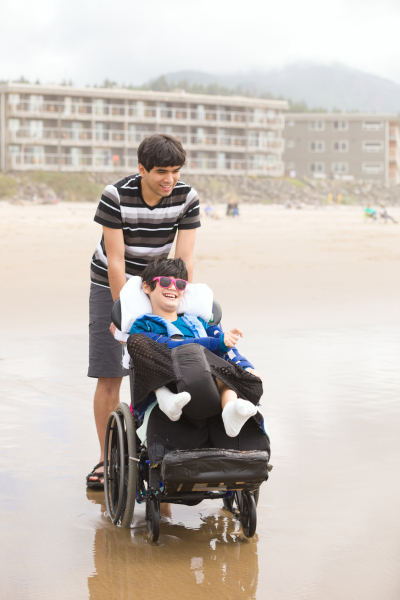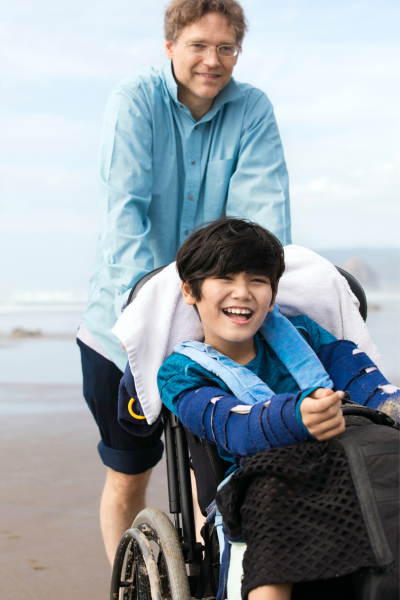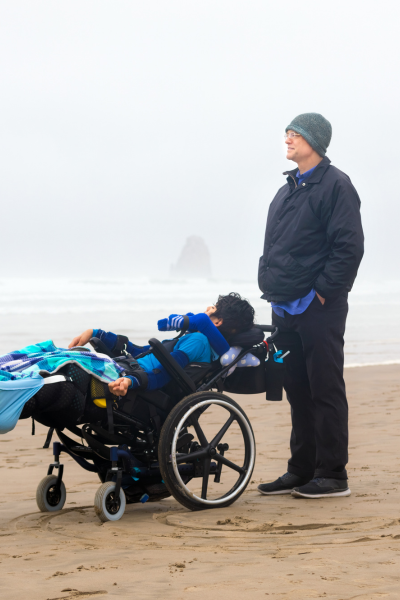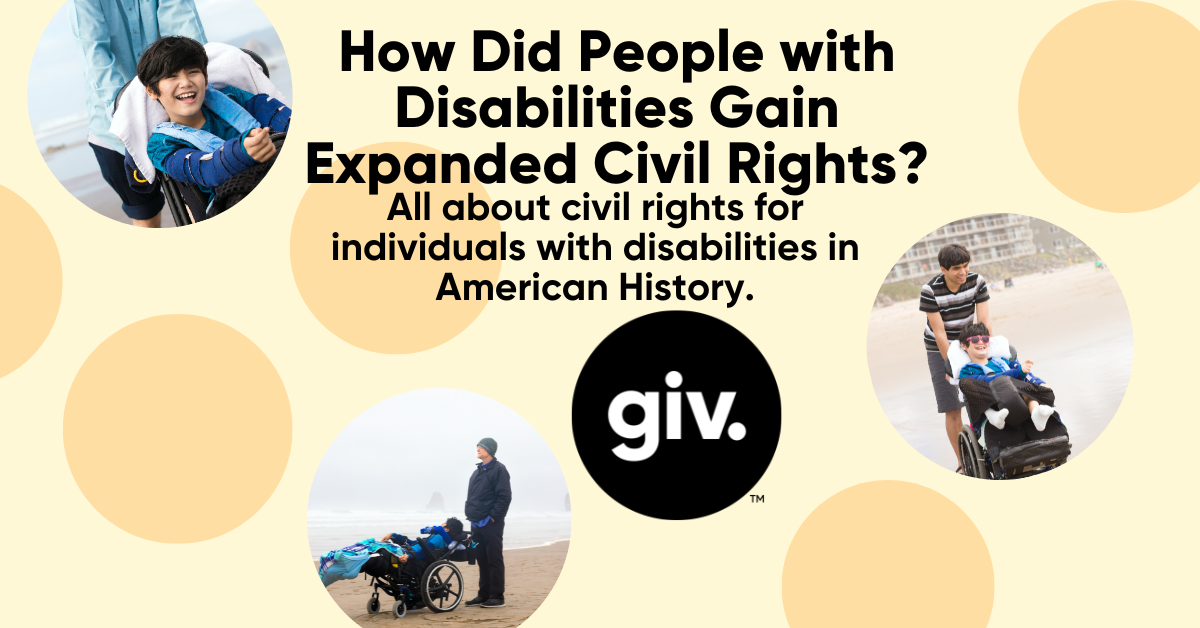How Did People with Disabilities Gain Expanded Civil Rights? This question encapsulates the remarkable journey of individuals with disabilities in their quest for equal rights and inclusion in society. The struggle for disability rights echoes the efforts of other marginalized groups throughout history who have fought for their civil liberties. In this blog post, we will delve into the significant milestones, key players, and legislative victories that have paved the way for expanded civil rights for people with disabilities.
How Did People with Disabilities Gain Expanded Civil Rights?
The fight for disability rights gained momentum with the establishment of the Disability Rights Movement. Prior to this, people with disabilities were often segregated, marginalized, and denied basic rights. This movement emerged in the mid-20th century and aimed to challenge discriminatory practices and create a more inclusive society. Advocacy efforts, grassroots organizations, and the tireless determination of disability activists played a crucial role in raising awareness about the need for change.
The Disability Rights Movement witnessed its first major success with the passage of the Rehabilitation Act in 1973. This federal law prohibited discrimination on the basis of disability in programs receiving federal funds, such as education, employment, and public services.
It was a significant step towards recognizing the rights of individuals with disabilities and providing equal access to opportunities. The Rehabilitation Act set the stage for further advancements in disability rights legislation.
In 1990, the Americans with Disabilities Act (ADA) was signed into law, offering comprehensive protection for people with disabilities. The ADA expanded civil rights by prohibiting discrimination in employment, public accommodations, transportation, and telecommunications. It also mandated accessibility features such as ramps, elevators, and accessible restrooms. The ADA was a landmark achievement, ensuring equal treatment, independence, and full participation for individuals with disabilities.
Understanding Disability Rights:
To comprehend the journey toward expanded civil rights for people with disabilities, it is essential to understand the concept of disability rights. Disability rights focus on providing equal access, opportunities, and protections to individuals with disabilities, aiming to dismantle barriers and discriminatory practices.
These rights encompass various aspects of life, such as education, employment, public accommodations, and healthcare. They strive to ensure that people with disabilities can fully participate in society and enjoy the same rights as their non-disabled peers.
Disability rights go beyond simply addressing physical accessibility. They also encompass the right to inclusive education, healthcare that meets individual needs, and protection against discrimination in all areas of life. Recognizing disability rights means acknowledging that individuals with disabilities should not be defined solely by their disabilities but should have the same opportunities and freedom of choice as everyone else.
The Disability Rights Movement:
The Disability Rights Movement is a fundamental pillar in the progress of expanded civil rights for individuals with disabilities. This movement gained traction in the late 1960s, inspired by the successes of the Civil Rights Movement and the activism of other marginalized communities. Disability activists organized protests, demonstrations, and sit-ins, drawing attention to the challenges faced by people with disabilities and demanding equal treatment.
One of the key organizations that emerged during this movement was the American Disabled for Attendant Programs Today (ADAPT). ADAPT played a pivotal role in advocating for the rights of individuals with disabilities, particularly in the areas of long-term care and community living.
Through their direct action campaigns, such as protests and civil disobedience, ADAPT brought attention to the need for accessible and community-based support services, challenging the prevailing institutionalized model of care.
Another influential figure in the Disability Rights Movement was Ed Roberts, who became known as the father of the Independent Living Movement. Roberts believed that individuals with disabilities should have control over their own lives and should be able to live independently in their communities rather than being confined to institutions.
His advocacy efforts and establishment of the first Center for Independent Living in Berkeley, California, paved the way for the Independent Living Movement and promoted the principles of self-determination and empowerment for people with disabilities.

Key Players in the Fight:
Numerous individuals and organizations played pivotal roles in advancing the cause of disability rights. Notably, disability rights activists such as Ed Roberts, Judy Heumann, and Justin Dart Jr. led the charge in advocating for change. These activists pushed for legislative reforms and tirelessly fought against discriminatory practices, paving the way for greater inclusion and equality.
Judy Heumann, a prominent disability rights activist, played a significant role in the passage and implementation of the Rehabilitation Act and the ADA. She fought for the rights of children with disabilities to access education, leading to the passage of the Education for All Handicapped Children Act in 1975, which later became the Individuals with Disabilities Education Act (IDEA). Heumann’s dedication to disability rights and her involvement in grassroots organizing laid the foundation for future advancements in inclusive education.
The Disabilities Act Impact:
One of the most significant milestones in the fight for disability rights was the passage of the Americans with Disabilities Act (ADA) in 1990. This landmark legislation prohibited discrimination against individuals with disabilities in various areas, including employment, public accommodations, and transportation.
The ADA not only protected the rights of individuals with disabilities but also emphasized the importance of accessibility and equal opportunities. This legislation had a profound impact on society, leading to improved accessibility and a shift in attitudes toward disability.
The ADA’s impact on employment was particularly significant. Prior to its passage, individuals with disabilities faced significant barriers in the workplace, often being denied employment opportunities due to their disabilities. The ADA transformed the employment landscape by requiring employers to provide reasonable accommodations to qualified individuals with disabilities, ensuring that they could perform their job duties on an equal basis with their non-disabled peers. This provision not only opened up employment opportunities for individuals with disabilities but also promoted workplace diversity and inclusion.
Additionally, the ADA mandated accessibility in public accommodations, such as stores, restaurants, and government buildings. This requirement led to the removal of physical barriers and the implementation of accommodations such as ramps, elevators, and accessible restrooms. The increased accessibility facilitated the participation of individuals with disabilities in public life, allowing them to enjoy the same experiences and services as everyone else.
Progress in Accessibility:
The progress in accessibility has been instrumental in expanding civil rights for people with disabilities. While the passage of the ADA marked an important milestone, it was just the beginning of a broader movement towards creating a more inclusive society. Since then, there have been ongoing efforts to further improve accessibility in various areas.
In education, the Individuals with Disabilities Education Act (IDEA) has played a crucial role in ensuring that children with disabilities receive appropriate educational services. IDEA requires schools to provide free and appropriate public education to students with disabilities and develop individualized education plans tailored to their unique needs.
This legislation has significantly increased opportunities for students with disabilities to access quality education and participate in mainstream classrooms alongside their non-disabled peers.
Furthermore, advancements in technology have contributed to enhancing accessibility. The development of assistive technologies, such as screen readers, text-to-speech software, and adaptive devices, has enabled individuals with disabilities to access information, communicate effectively, and perform daily tasks independently. These technologies have broken down barriers and created new opportunities for individuals with disabilities to engage with the world around them.

Disability and Civil Rights:
The fight for expanded civil rights for people with disabilities intersects with the broader civil rights movement. Just as racial minorities and women fought for their rights, individuals with disabilities demanded equal treatment and opportunities.
The disability rights movement drew inspiration from the victories of other marginalized groups and aimed to challenge the societal norms that perpetuated discrimination and exclusion.
Recognizing the inherent dignity and worth of every individual with a disability is essential for achieving true equality. Discrimination based on disability is a violation of human rights, and it is crucial to address not only the physical barriers that restrict access but also the attitudinal and societal barriers that prevent full inclusion. By forging alliances with other civil rights movements, disability rights activists have been able to amplify their voices and create a collective push for social justice.
Addressing Discrimination
Addressing discrimination against individuals with disabilities requires a multifaceted approach that encompasses legislative measures, awareness campaigns, and changes in societal attitudes. Civil rights laws, such as the Rehabilitation Act, the ADA, and the IDEA, have been instrumental in prohibiting disability discrimination and promoting equal opportunities. These laws have created a framework for challenging discriminatory practices and holding accountable those who perpetuate them.
Educational institutions play a vital role in addressing discrimination and promoting inclusivity. Efforts to foster inclusive education involve providing reasonable accommodations for students with disabilities, promoting accessible learning environments, and ensuring that students with disabilities have equal access to educational resources.
By prioritizing accessibility and embracing the principles of Universal Design for Learning, educational institutions can create an environment that enables students with disabilities to thrive academically, socially, and emotionally.
Beyond legislation and education, it is crucial to challenge and change societal attitudes towards disabilities. Raising awareness about the rights and capabilities of individuals with disabilities helps break down stereotypes and misconceptions.
Disability rights activists, public figures, and the media all play significant roles in shifting public perceptions and promoting a culture of inclusivity. By promoting diversity and highlighting the abilities and achievements of individuals with disabilities, we can challenge discriminatory attitudes and foster a more accepting and inclusive society.
The Fight for Equality
While significant progress has been made in expanding civil rights for individuals with disabilities, the fight for equality continues today. Disability rights activists and organizations tirelessly advocate for full inclusion and equal opportunities for people with disabilities. With ongoing advocacy efforts, legislative advancements, and increased awareness, the goal of achieving true equality for individuals with disabilities remains within reach.

The journey toward expanded civil rights for people with disabilities has been marked by activism, legislative victories, and increased accessibility. The Disability Rights Movement, key players in the fight, and landmark legislation such as the ADA have played crucial roles in advancing the cause of disability rights.
As society continues to evolve, it is crucial to prioritize inclusive policies, dismantle discriminatory practices, and ensure that individuals with disabilities can fully participate in all aspects of life. By championing equality, we can create a society that celebrates diversity and provides equal opportunities for all its citizens.






